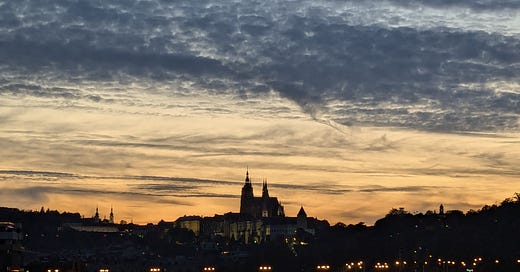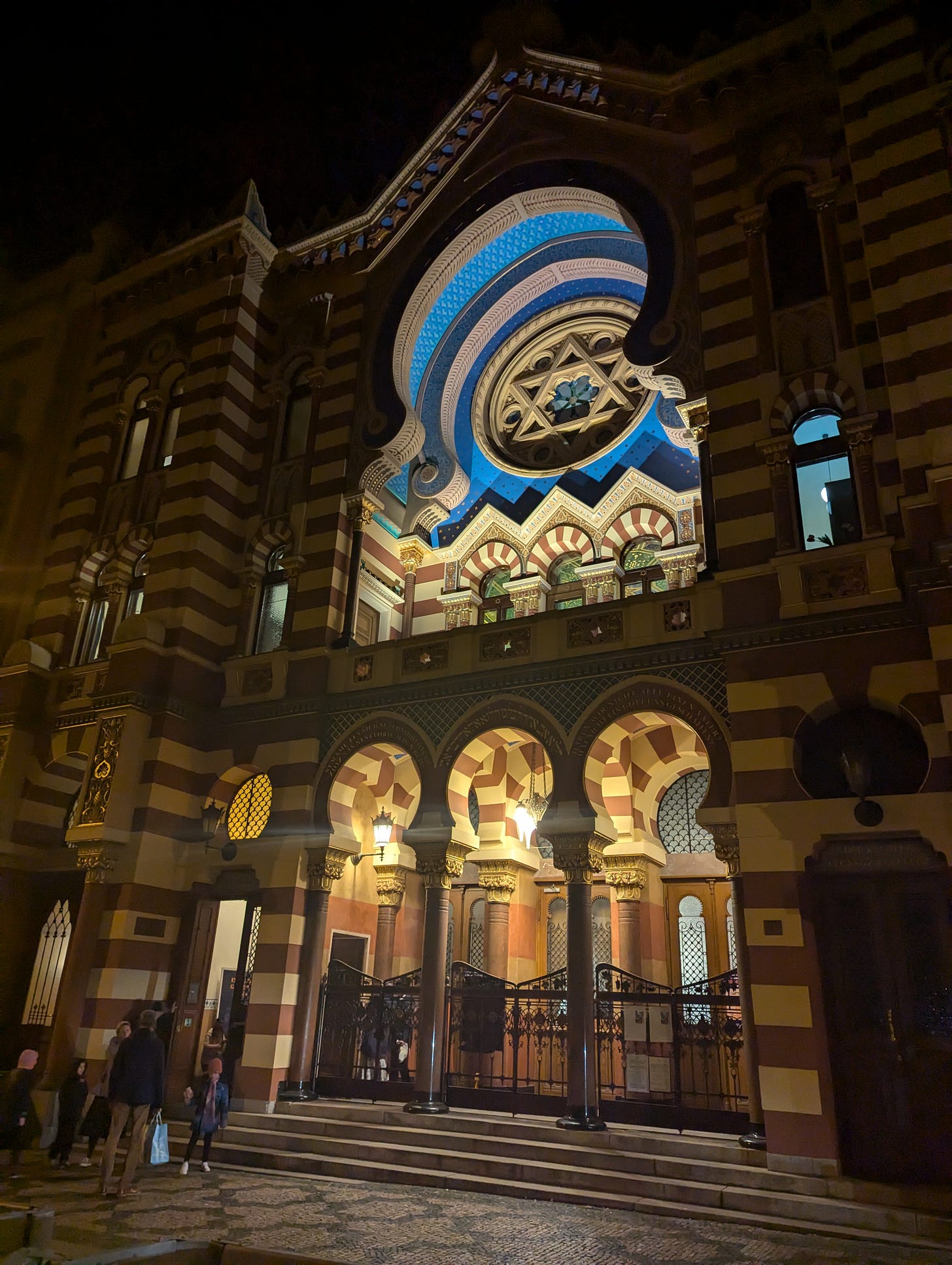Contra Guest Post City Review: Prague (and others)
Writing my own review of a city previously seen through the eyes of a gues poster. TLDR: Prague good, Rome meh, Athens nice.
Epistemic status: More uncertain than usual. These are usually mostly vibes that might feel different for a different visitor, let alone a local, and this one has had at least one actual Czech person telling me I’m too positive on Czechia.
Flying between Israel and New York is a bit of a mess these days. You can either pay through the nose to fly El Al, or try to find flexible flights through central1 or eastern Europe, where “flexible” here means “surprise multi-day layover”. And so I ended up in
Prague
Prague, Czechia2 is famously, very nice. In what I’m sure is going to be maximally offensive to everyone involved, I’m going to say it felt like the Dallas of Europe3.
People claim this is because it wasn’t bombed in WW2 so it got to keep all its old buildings, but these people put way too much value on things being old. That said, Prague does have a lot of nice things that come from being old, like statues4 and pedestrian downtowns.
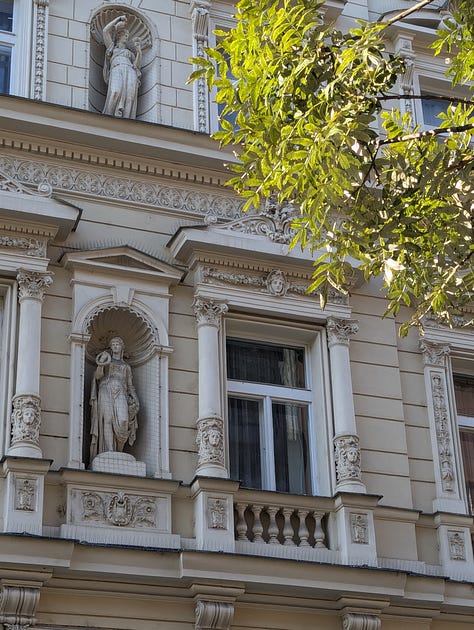
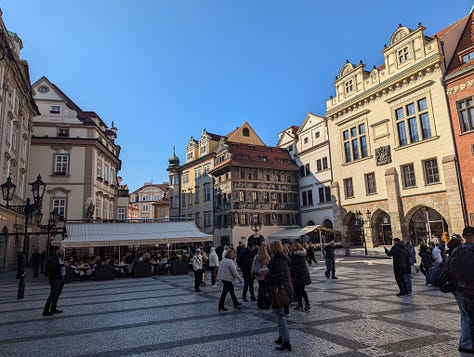

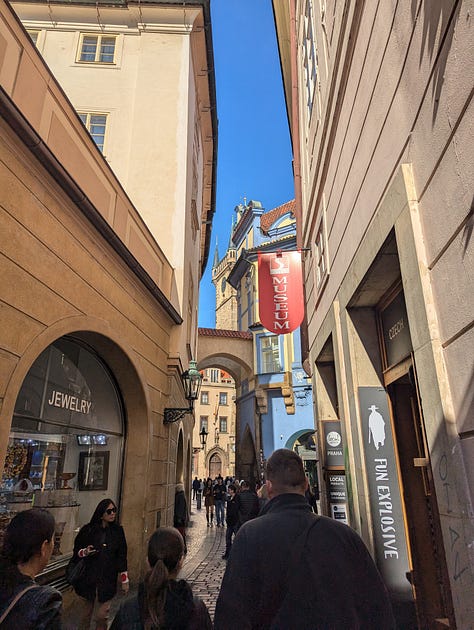

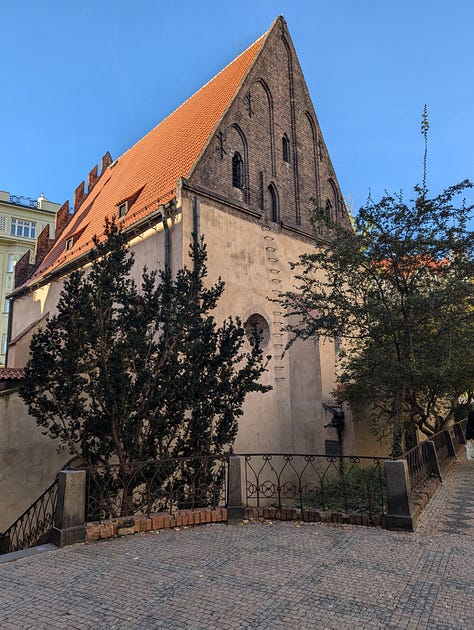
It also has a bunch of castles. And peacocks, because you’re not a proper medieval castle without peacocks.
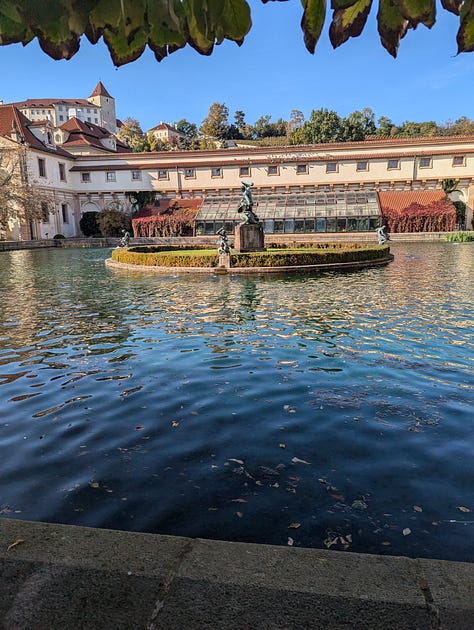
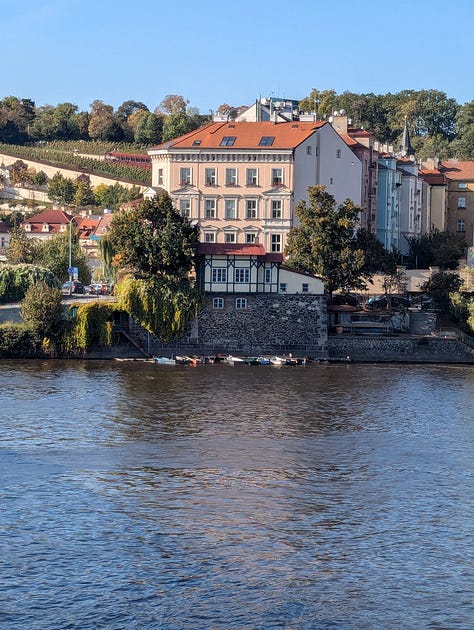
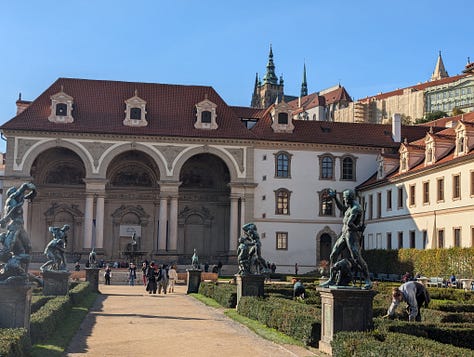
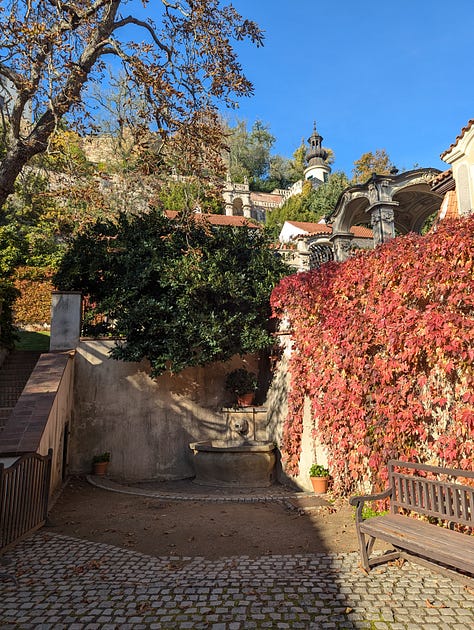

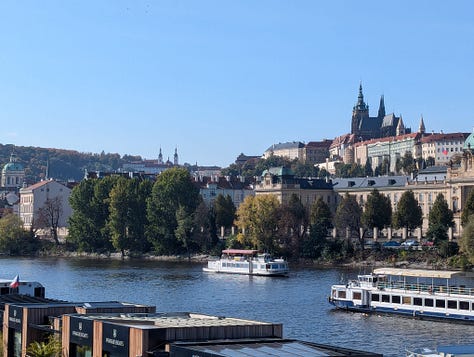



So Prague has a lot of nice old stuff, which would superficially make you think of Vienna. But they still feel incredibly different: Vienna is fancier, has a better metro system, and is probably cleaner, but it also feels like Charn, the hollow ghost of a once-mighty empire whose music no longer plays. Prague, on the other hand, feels alive.
A moment’s aside for cultural reflection here:
There’s two forms of social malaise common in western countries. One is aging populations, as seen in Vienna. It’s not just that the average age of individuals goes up5, the age of the country as a society goes up. Countries worry more about preservation and loss-aversion than they do about building new things, you get more concern about redistribution than growth6, and science fiction becomes less optimistic.
The other one is the rise in empty calories ideology7. You get a large (and disproportionately culturally significant) group of people who base their identities on (often-extreme, almost always unreasonable) ideologies that don’t really connect to their real lives in any way and which, more importantly, they don’t understand or have any realistic plan to make better8. It started online (and still mostly is), but it has gradually leaked into the real world.
These two probably have the same underlying cause. They’re both related to feeling helpless (the first responds by giving up on doing anything; the second makes people act loudly about things instead of trying to do anything about them). They both feel like where civilization ends up when you’re done solving all the real problems. They also both feel related to low fertility (the first as a consequence of it; the second as both a consequence (having children to take care of helps ground people) and a cause (empty calorie ideologies create a substitute goal for family formation)).
Anyway, the point of all this is to say Prague actually felt pretty good at avoiding these issues, which is probably why I liked it so much. It just felt like a place real people live (despite all the castles and the peacocks)9.
My best guess for the cause is later development (and also, possibly, closer proximity to the external threat posed by Russia). Former Soviet bloc countries (in europe) hit their economic boom after the soviet collapse in 1991, while western europe hit theirs after WW2. So culturally, we should expect Czechia to be around where the west was in the seventies or eighties: Maybe a bit past the peak growth period but content with their lot, like a happily married couple on their fifth anniversary who are past their early romance but still comfortable and happy with each other.
Anyway, that’s the theory. As far as I can tell it matches the evidence, at least vibes wise10. You do see families with children around Prague, which is nice11. And you see local coffee shops, but also chain places with KFC that look like places normal people eat, instead of looking run-down and dirty (there’s probably something here about economic segregation; a country where bankers and janitors both feel comfortable going to KFC sometimes is nice, and also might be a place where the banker may have worked part-time as a janitor to put himself through school when he was younger).
So anyway, I liked it. I went to this nice warm bar with an older waitress who seemed more cheerful and friendly than businesslike. I got some pizza there, which was great12. And when I walked out I walked back from there I went through this little arch carved in an apartment building to let the sidewalk through it. Which was nice, in a small-scale practical “just solve the frickin problem, mr. urban designer” kind of way.
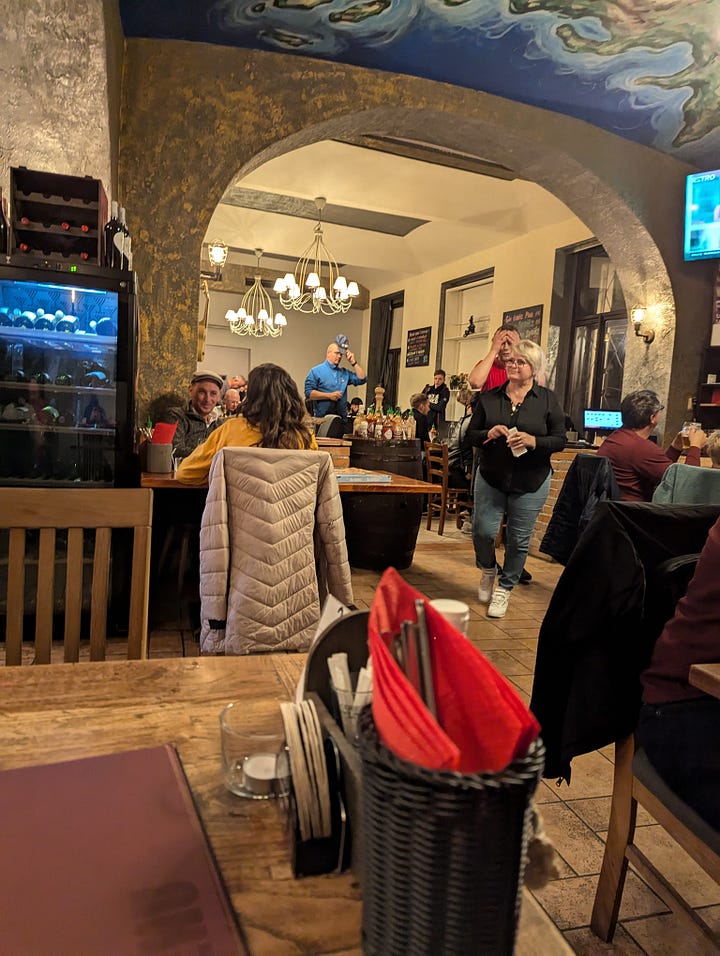


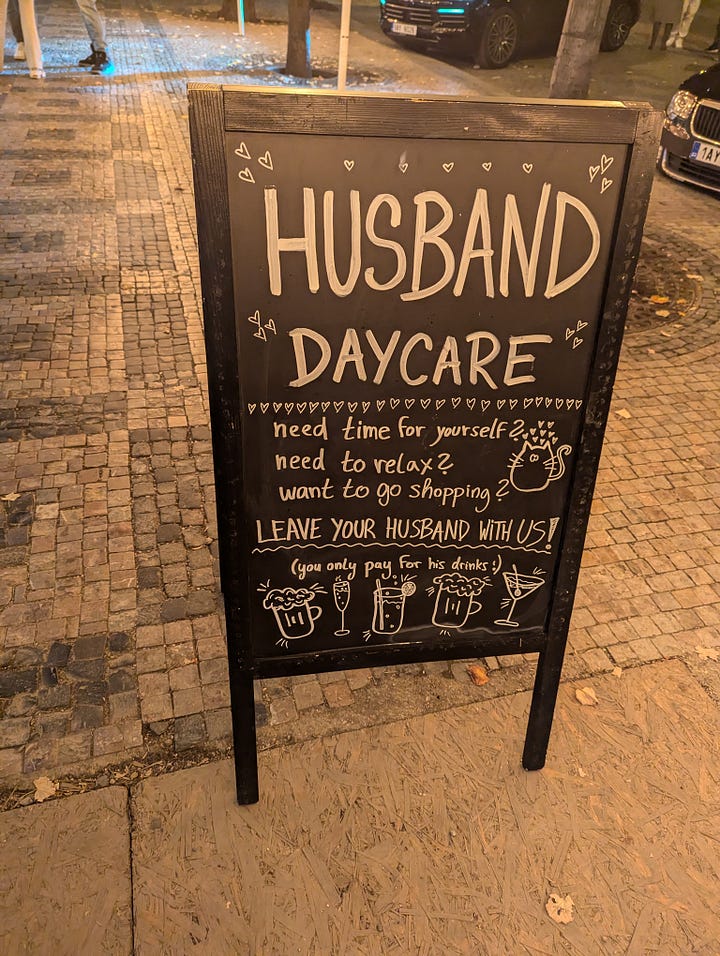
I don’t mean for all this to end up sounding like Prague is some magical land of social harmony. As far as I can tell, it’s mostly just ordinary people having a normal one.
One last nice thing about Prague was the lack of antisemitism. It’s hard to avoid in western europe these days, from the PLO flags to the occasional pogroms. I didn’t really run into that in Prague. The one piece of antisemitic graffiti, in a coffee shop bathroom downtown, had been crossed out by a more recent artist. There was even an openly jewish business, which I can’t imagine being safe to do anywhere in western europe these days.
I did see one PLO flag hanging outside what turned out to be a gay bar when I looked it up13. And the old downtown synagogue had traffic barriers and armed security around it. I guess nowhere’s perfect.
The obligatory train section
The subway isn’t Vienna level, but it’s nice, simple, and works. It’s the world’s best example of the soviet triangle, the design pattern where you have three through-running lines with three different intersection points downtown that stretch out in six directions, and does it well aside from being a bit too deep. They’re working on adding a fully automated line D, which will ruin the pattern but I’m still a fan of on the basis of “new fully automated subway line”.
The one good story I have about the subway is that I ended up in an impromptu running race with a stranger between platforms at an intersection station (like in New York, the stations are far too big and very confusing. Unlike in New York, they only involve a single transfer and have no excuse to be this way). I’m not sure he knew we were racing, but he started sprinting so I had to sprint to compete, up stairs and through passageways and then down and up and down again.
There’s also the more extensive surface tram system, which is reasonably nice. The one thing I notices about it is they hook the overhead cables up directly into nearby buildings, which previously I’d only seen in Switzerland but I guess isn’t quite as unique as I thought.
The one real downside is that there’s very few bike lanes (there are some, and biking there is probably better than it seems if you know where they are). Prague is a sufficiently reasonable city to have scooters, but doesn’t really go out of its way to make things universally accessible by bike.
The modern part
Prague is famous for having lots of old fancy architecture and unspoiled castles, and it does have those in spades. I, on the other hand, am usually a fan of modern architecture14. But as it turns out, Prague also has some great modern areas in its newer neighborhoods.
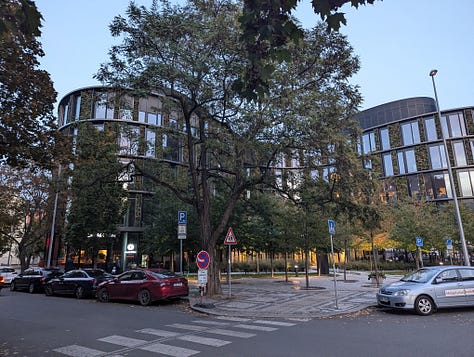

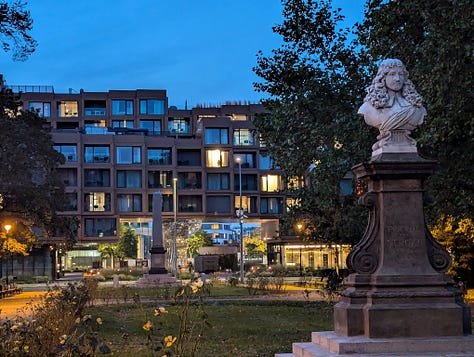

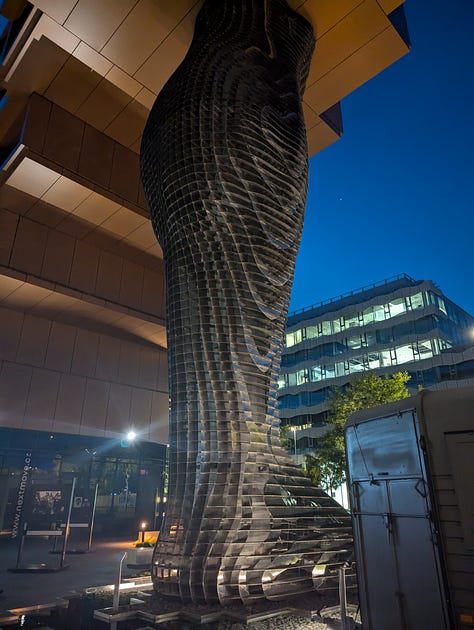



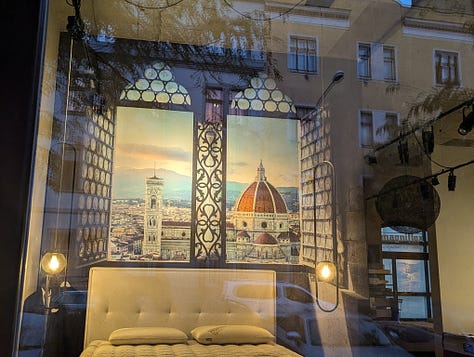
The new area also had riverfront bike lanes, which I guess are much easier to do when you’re building from scratch than add to an already-congested built up downtown.
This, to me, is the spirit of YIMBYism in its best form, where you can just build new areas that are beautiful examples of the kind of things they are. My brother, as a snob for all things old, hated these pictures since he thinks they’re too modern, but there’s another whole Prague full of old stuff for people with his priorities. When you’re just free to build, you can have something for everyone. And when you let the people who want it do the building, you get the kind of examples of modern (or whichever other) architecture the people who like them actually like about them, and not the ugly version the people who don’t like them imagine them to be and force them into compromising into.
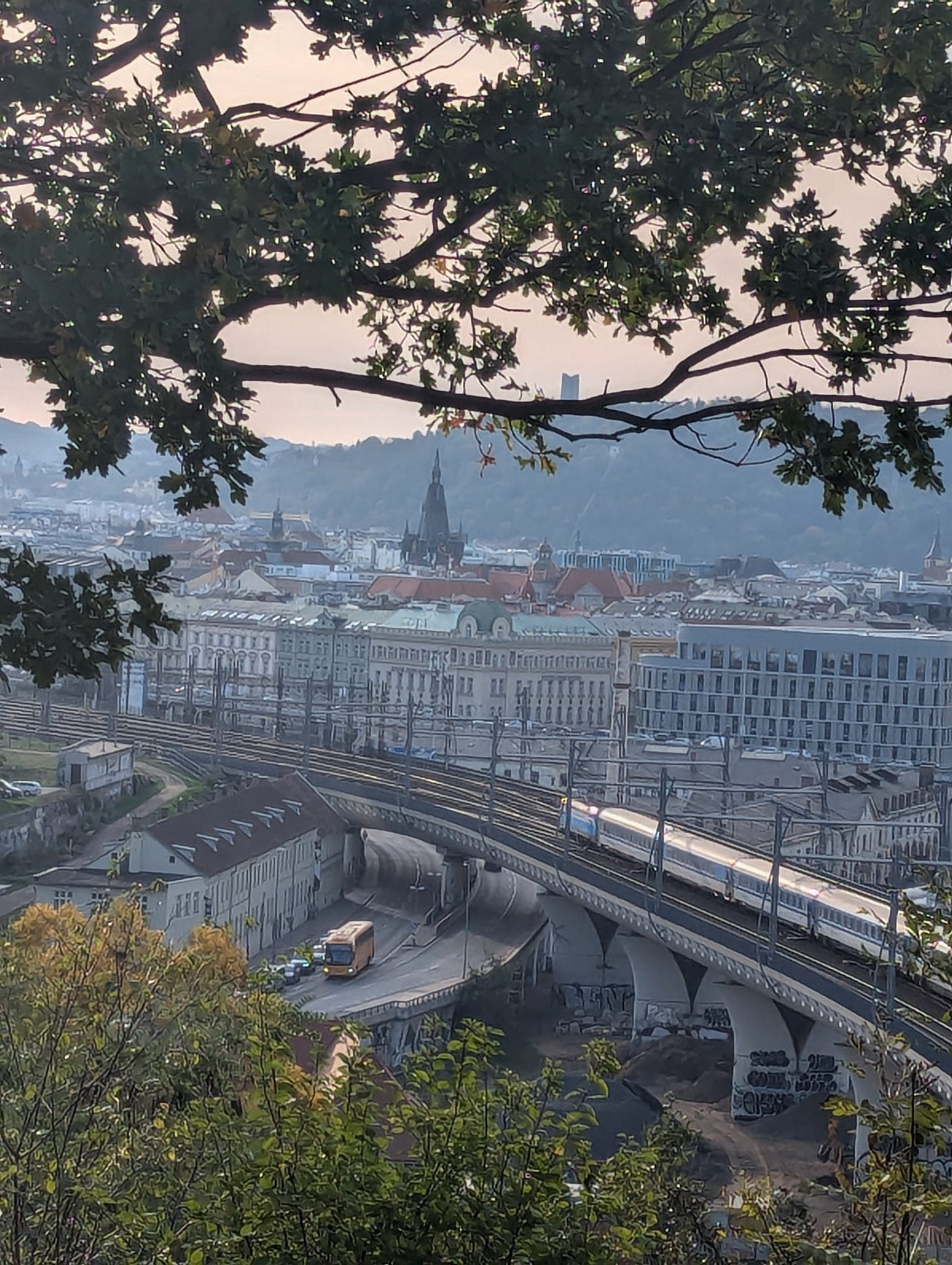
Rome
Someone recently noticed I tend to be relentlessly positive about everywhere I visit, and asked me if I’d ever gone somewhere I didn’t like much. After thinking about it, I realized I’d found Italy pretty unexciting15. This has gradually developed into total disdain for Italy, which my day in Rome did nothing to mitigate.
What is good in Rome? The sheer size of the Vatican’s cathedral is pretty impressive. There’s a line in Jonathan Strange & Mr. Norrell where Strange, on seeing a fairy house, says that of all the dwellings on earth only the Tsar’s Kremlin or the Pope’s house in Rome might possibly compare, and I can see what he means.
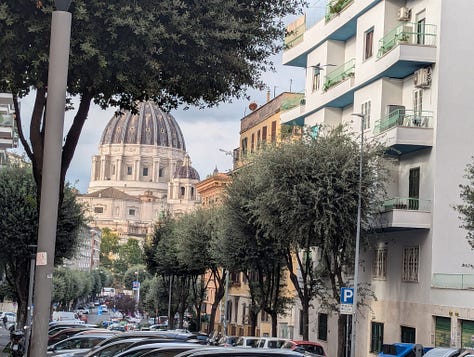
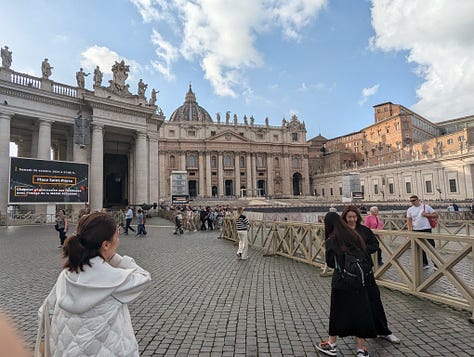

On the other hand, even the Vatican courtyard was full of giant LCD screens broadcasting ads. And that’s a perfect microcosm of Rome - sure, it has some nice old stuff, but it’s full of tacky screens (or, elsewhere, massive amounts of scaffolding16 blocking everything), poorly managed crowds (and to be clear, this is poor management. Rome has a lot of tourists, but it gets so clogged because it manages the space badly, not because the number is so large it can’t possibly be managed), and trying to make up for it all by throwing a bunch of old stuff that doesn’t even match together in a small area of downtown and hoping that makes it artistic17.
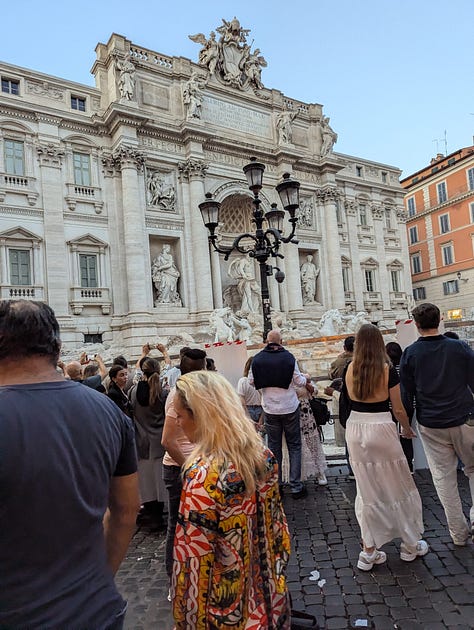
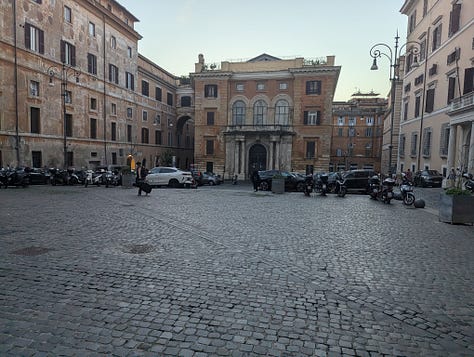
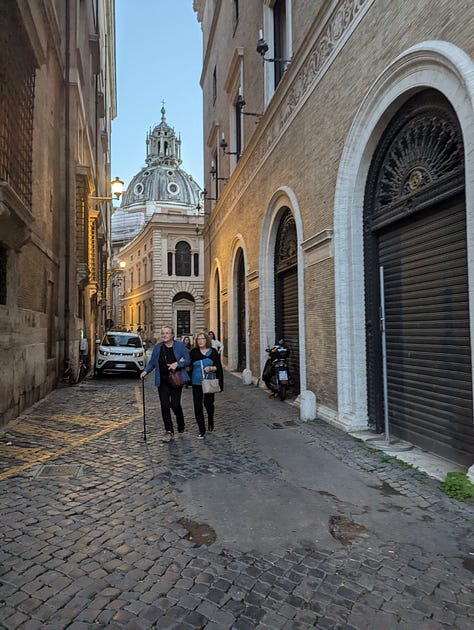
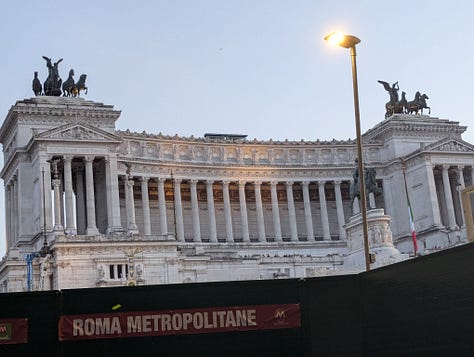
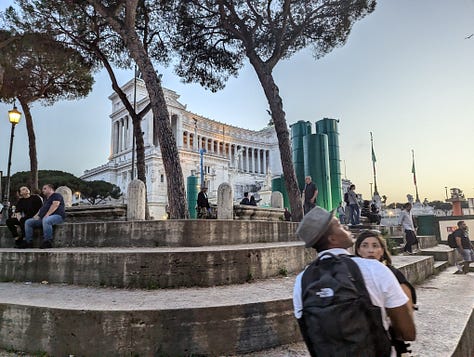
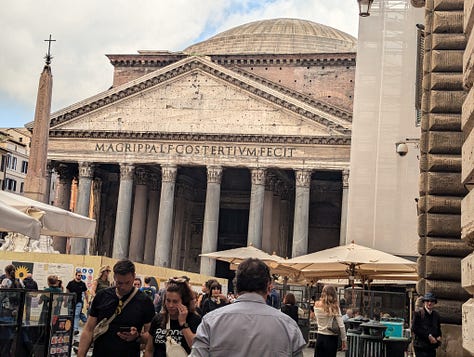
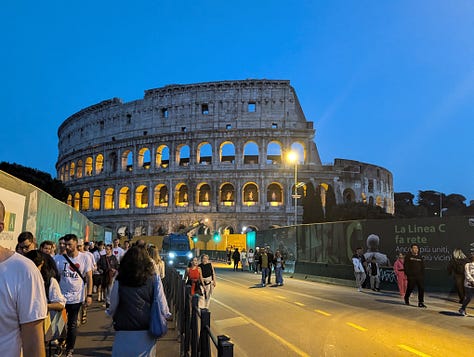
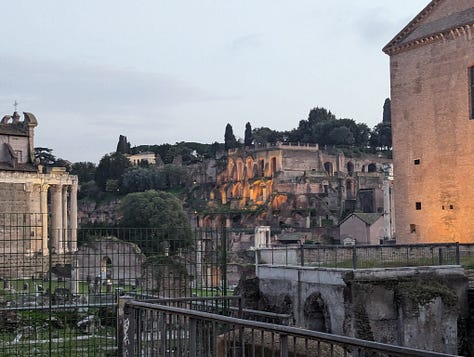
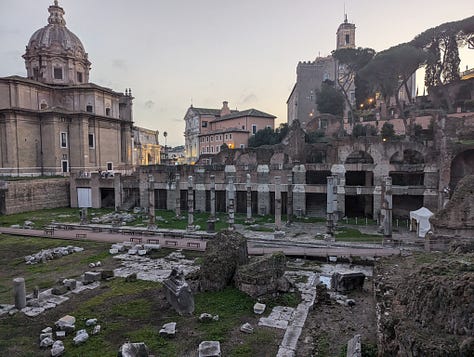
I had some pizza before I left, because Italian pizza is supposed to be good. It wasn’t actively bad, I guess, but it also wasn’t anything special. If this is the peak of italian food culture, Italy should probably change the subject.
Athens
I landed in Athens before dawn the next day, and had most of a day to explore the city. While on paper most of Europe is poorer than Israel (let alone New York), Athens Is the first european city I’ve been to where that poverty is visible. Buildings are shabbier and more run-down, cars are older, there is a decent metro system but no packs of beautiful trams and buses.
But it’s much better than Rome. Rome feels like a rich man gone to seed, his fancy clothes food-stained as he teeters from yet another night spent drinking. Athens feels like a poor man wearing his poverty honestly, standing tall in his shabby clothes. It may not be rich, but it does well with what it has.
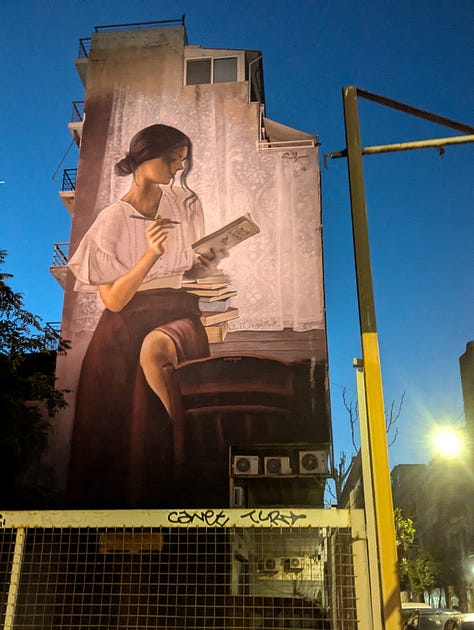

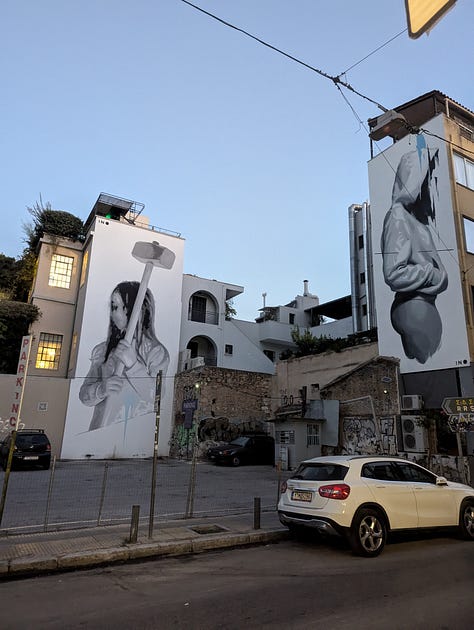
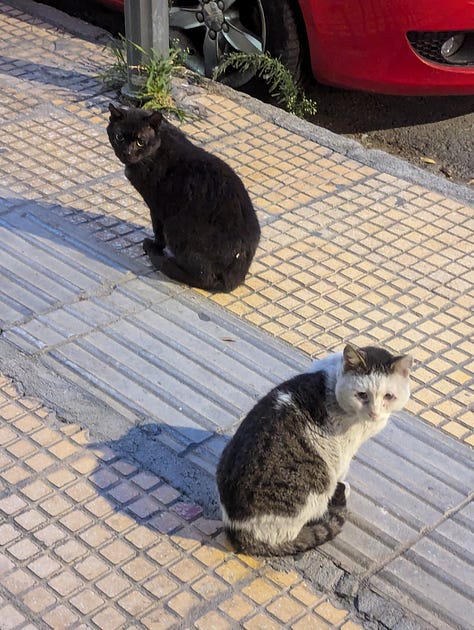
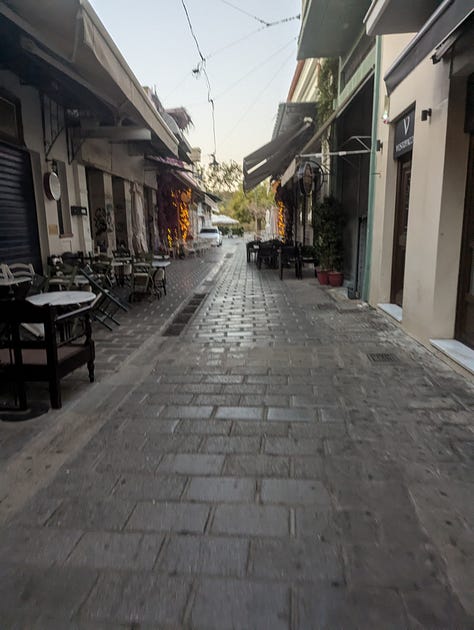
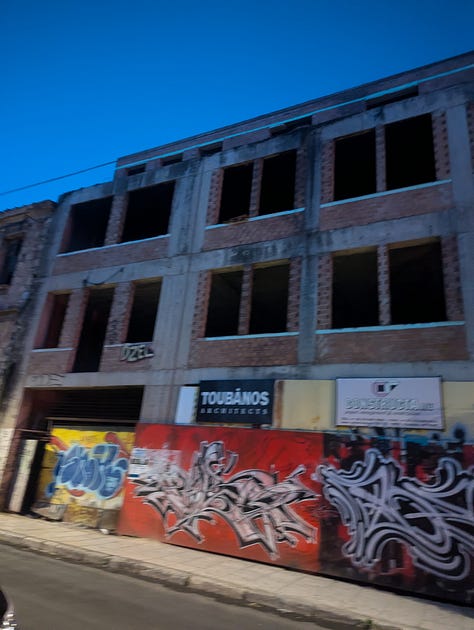
It also manages its ancient monuments much better. Instead of throwing them all into one big mixer bowl in the middle of a crowded downtown, it keeps them on open parks in the hills, in an area that’s actually pleasant to walk through.
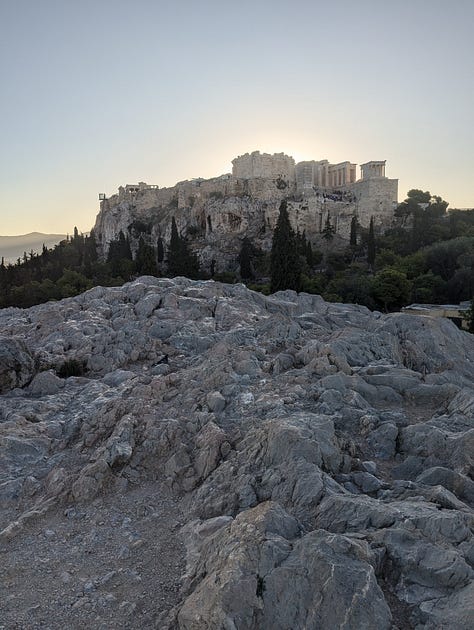
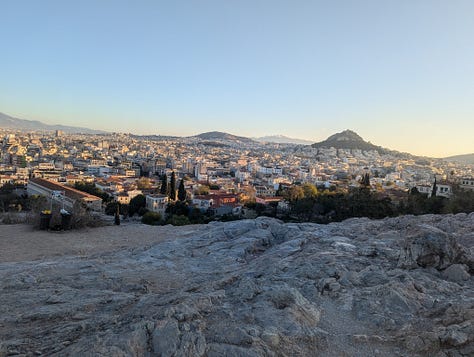
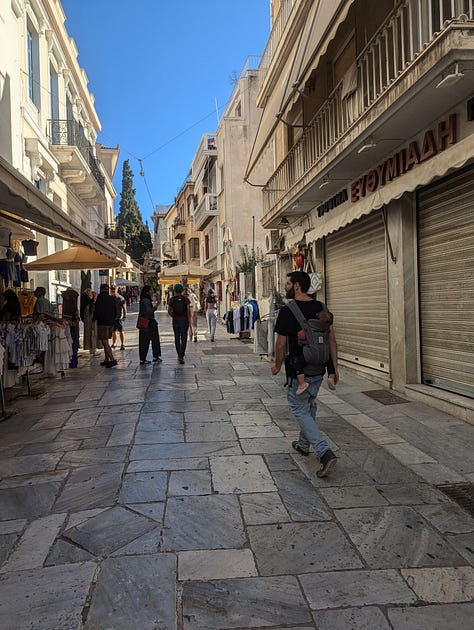
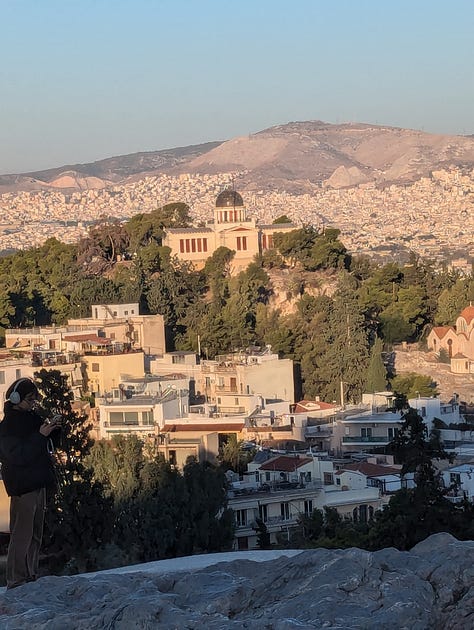
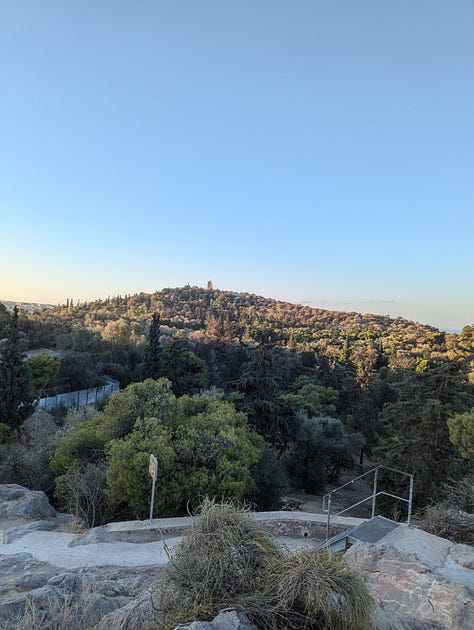
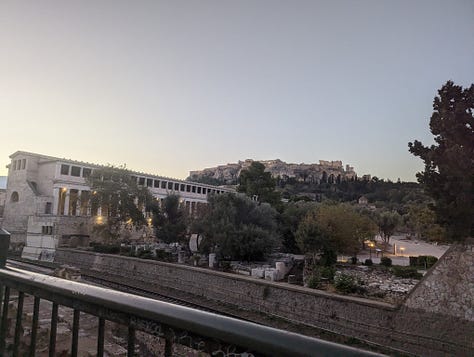
That’s not enough to make it one of the world’s great cities. But it is a pleasant place that does its honest best with what it has.
I found out the awkward way that Czechs are kind of offended if you refer to it as eastern instead of central Europe. This makes sense on cultural grounds, but I’m not sure how I feel about this blatant rebellion of culture against geography.
Apparently there’s some dispute on whether it should be “Czechia” or “the Czech republic”, with at least one Czech preferring Czech republic (to avoid confusion with Chechnya). Still as far as I can tell most Czechs prefer Czechia now, and it’s the name used by the EU and CIA world factbook. Also, it’s an actual name and not a description, so it’s just clearly better and I applaud Czechia for having made the transition.
The United States of America is also a description rather than a name, and should make a similar transition. I propose changing it to “Countryland”.
Except without Dallas’s highway addiction.
Bonus points for just having netting around them instead of surrendering to the scaffolding cartel
The average age in China is actually older than in the US, but it seems to suffer less from this particular problem.
This isn’t really a left/right thing. Trump’s republicans, for example, are now more focused on preventing illegal immigration (partly because of its perceived effects on distribution) than on the historical republican focus on economic growth.
It's like the idiots who figure that hummingbirds worry about their weight or tooth decay or some such nonsense, maybe they just want to spare hummingbirds the evils of sugar," explained Wednesday. "So they fill the hummingbird feeders with fucking NutraSweet. The birds come to the feeders and they drink it. Then they die, because their food contains no calories even though their little tummies are full. That's Paul Bunyan for you. Nobody ever told Paul Bunyan stories. Nobody ever believed in Paul Bunyan. He came staggering out of a New York ad agency in 1910 and filled the nation's myth stomach with empty calories.
(American Gods)
I’ll avoid any specific examples to avoid getting mired in controversy, but if you go to Twitter and switch to the “For You” tab at least seven of the first ten tweets in the feed will be examples of this.
This does come in degrees: New York is better than San Francisco, And Dallas does better than New York. Overall Israel does better than America and my general impression is that western Europe does worse (while eastern Europe does better), although I’m less confident about those two.
I’m now going to make a bunch of stories about what the society feels like based on not enough evidence; at least one of them is likely to be wrong, but it describes, directionally, what it felt like there.
Czech TFR is 1.62, below replacement rate but fairly high by developed country standards.
Unlike the pizza I had in rome. Later in the post we’re going to spend some time bashing Italy.
In fairness to the locals, the gmaps reviews didn’t seem happy about politicizing it this way. Still, I guess being LGBT and jewish isn’t safe anywhere outside of Tel Aviv these days.
I like looking at buildings and imagining how nice it must be to live in them, and while old buildings are often pretty from the outside they’re also usually dusty and uncomfortable to actually live in.
Except for Milan’s central train station, which is great. Mussolini’s finest work.
I had a conversation later about whether it should be considered a scaffolding mafia or cartel. I ended up deciding in favour of cartel - Mafia gets points for being Italian, but a cartel is what you call a loose alliance of international criminal organizations, and enough cities have organized scaffolders ruining anything that it should be considered an international criminal alliance.
It’s the Martin Crane chair school of design.

